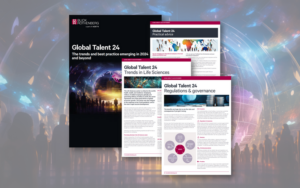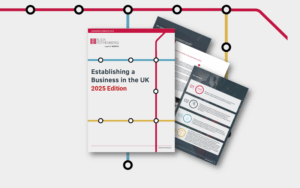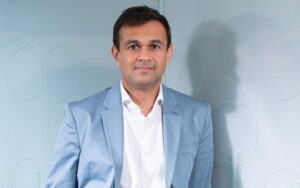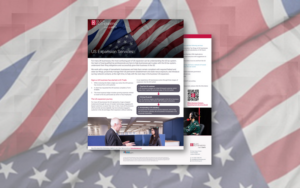Happy new tax year… now is the time to start planning
When it comes to tax, leaving important planning to the end of the tax year can cost thousands
There had been some major tax announcements during 2021, with the personal tax allowances and thresholds frozen until 2025/26, and the introduction of the Health and Social Care Levy. The UK tax burden is at its highest level since the 1950s, but there are some simple planning actions that can be taken to manage the tax trap over the long-term.
What’s new in 2022/23?
The personal allowance remains at £12,570 for 2022/23, but the Chancellor announced at his Spring Statement an increase to the National Insurance (NIC) primary threshold to £12,570 from 6 July 2022.
All NIC rates are increasing by 1.25%, meaning someone earning over £150,000 will face an effective rate of Income Tax and NIC combined of 48.25%. Similarly, dividend tax rates increase to 8.75% for basic rate taxpayers, 33.75% for higher rate taxpayers and 39.35% for additional rate taxpayers (someone earning over £150,000).
As has been the case since 2010, individuals earning over £100,000 lose their personal allowance by £1 for every £2 over this threshold, meaning an effective 60% tax rate between £100,000 and £125,140.
The capital gains annual exemption remains at £12,300; the Inheritance Tax (IHT) nil rate band is also fixed at £325,000, which has been the case since 2009.
To check if you are better or worse-off with the new tax rates, you can use our interactive tax calculator.
Planning for the 2022/23 tax year – ten new tax year resolutions
There is no reason why personal tax planning should be left to the last minute, and completing your planning early ensures you don’t miss out on valuable allowances which are otherwise lost.
- Use the capital gains annual exemption of £12,300 for 2022/23 – it can’t be carried forward or transferred to another person (such as your spouse).
- Contribute to your ISA – the ISA allowance for 2022/23 remains at £20,000 and the Junior ISA allowance is £9,000 (for children under 18). If you’re eligible, consider contributing up to £4,000 to a Lifetime ISA which carries a £1,000 bonus, but there are penalties for early withdrawal. ISA allowances cannot be carried forward.
- Maximise the pension annual allowance of £40,000 (but tapered down for someone earning over £240,000 to a minimum of £4,000). You can carry forward unused pension annual allowances for up to three years, so the 2019/20 allowance needs to be used by 5 April 2023.
- Stakeholder pensions for non-earning spouses and children – contribute £2,880 and effectively receive £720 free.
- Use the Inheritance Tax gift exemption of £3,000, which can be carried forward one year.
- Consider transferring income producing assets to the lower earning spouse to utilise their personal allowance and lower tax bands. By doing this early, it allows for more of the tax year to generate the sufficient income to fully utilise the personal allowance and lower tax bands. Someone could generate £42,370 tax-free per annum by simply using all their tax allowances.
- Submit claims for overpaid tax and capital losses relating to the 2018/19 tax year before 5 April 2023, after which such claims would not be allowable.
- If you will make an investment in a Venture Capital Trust (VCT) or the Enterprise Investment Scheme (EIS), consider completing these early so that any tax repayment can potentially be made sooner, or enabling the relief to be carried back to the previous tax year.
- File your 2021/22 Self-assessment tax return – if you think are due a tax repayment, file your tax return as soon as possible so that you receive the refund. If you had to make advance payments on account for 2021/22, it makes sense to file your tax return before 31 July 2022, so that the second payment on account could be potentially reduced. Finally, filing your tax return early limits the time window that HM Revenue & Customs (HMRC) have to raise an enquiry into your return – HMRC have one year from the filing date of your tax return to issue their enquiry.
- Make any charitable donations in 2022/23 before filing your 2021/22 tax return and you can decide whether you want to carry back the donation to 2021/22 to achieve the tax relief earlier.
Planning for the beyond – the Health and Social Care Levy
As mentioned above, all NIC and dividend tax rates have increased by 1.25% under the Government’s Health & Social Care Levy bill. The Health and Social Care Levy is now a permanent feature of the UK’s tax system and a valuable tool for future Governments to increase taxes, either through increasing the rate or widening the scope to include other sources such as rental income and capital gains.
Individuals and business owners should consider some simple steps to mitigate the long-term effect of the new tax.
- Salary sacrifice arrangements for pensions, electric cars and cycle to work can save Income Tax and NIC for the individual and 15.05% employer’s NIC for business.
- Alternative reward options for employees, which are not subject to the Health and Social Care Levy, such as approved share options (e.g., Enterprise Management Incentive (EMI)) and equity-based incentives, such as growth shares, which can be assessed to Capital Gains Tax.
- Using ‘tax wrappers’ for dividend income, including ISAs, pensions and offshore bonds.
- Making investments under EIS and VCT which offer upfront tax reliefs (e.g., 30% Income Tax reducer) to mitigate the higher dividend tax cost – dividends from qualifying VCT investments are also exempt from taxation.
- Establishing a personal or family investment company to receive investment income/capital gains which would be assessed to Corporation Tax, but the tax rate increases from 19% to 25% from 1 April 2023. However, investment companies can claim deductions for costs (e.g., investment management fees and loan interest) and certain qualifying dividends are exempt from corporation tax.
While the new tax year is young, taking some simple planning steps now can generate savings not only for the year ahead but over the long-term.
Would you like to know more?
If you have any questions above the above, please get in touch with your usual Blick Rothenberg or contact Nimesh Shah using the form on this page.
Contact Nimesh

You may also be interested in

Unlocking Growth: What the Government’s 2025 Industrial Strategy Means for the UK’s Creative Sector

A ray of hope for the Property Market: HMRC transaction data suggests recovery momentum













